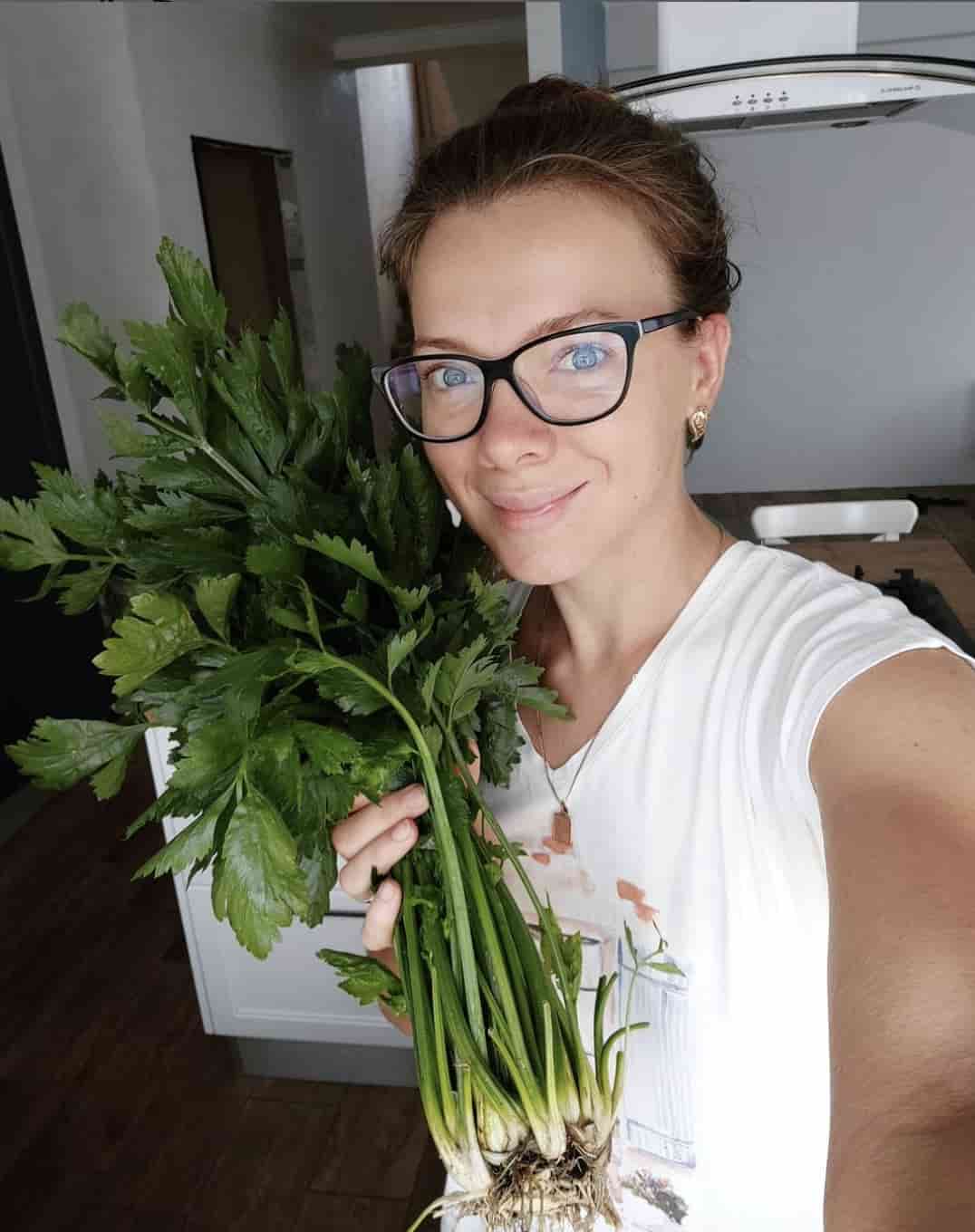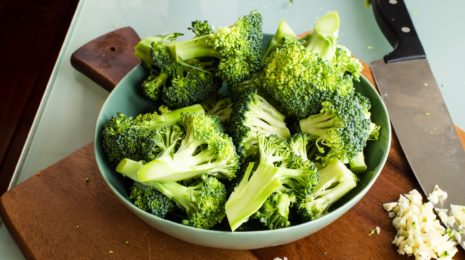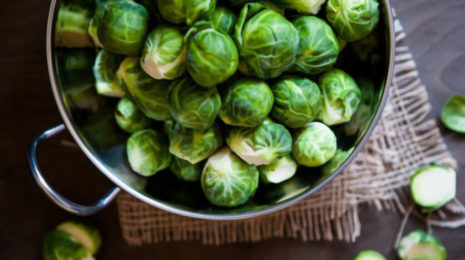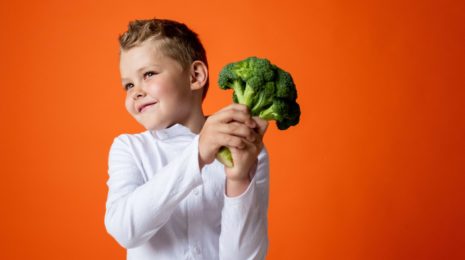The vitamin K group consists of two types: vitamins K1 and K2.
What Does Vitamin K Do for the Body

Also, an excess of this vitamin can affect the cardiovascular system. The fact is that it reduces the amount of calcium in the arteries. This can lead to increased heart health problems. [2]
What Foods Have Vitamin K?
Below, we list a list of foods that are rich in menaquinone. You can use them in your favorite dishes.
Kale Cabbage
One serving contains 545 mcg of phytodione.
This variety of cabbage has “lacy” leaves with a rich, dark green color. Many nutritionists consider kale an ideal product for weight loss. The fact is that it is quite nutritious but low in calories. Also, it has a small number of harmful fats and carbohydrates. At the same time, Kale has a rich vitamin set and an abundance of useful substances and minerals. [3]
Brussels Sprouts
One serving contains 290 mcg of phylloquinone.
This type of cabbage is very nutritious. Among other things, it contains many antioxidants and other beneficial substances. She, as a rule, is not very fond of children. But adults, once they try it, quickly appreciate its taste.
How Much Vitamin K Is in Broccoli?
Broccoli contains – 165 mcg of vitamin K.
This legendary variety of cabbage is much loved by nutritionists. First of all, it has very few calories. Secondly, broccoli is rich in nutrients. This type of cabbage often becomes the basis for healthy diets. Thanks to these properties, the weight goes away quickly and without harming your health. Plus, broccoli improves heart function and helps fight diabetes. Kale also reduces the risk of cancer. [4], [5], [6]
Asparagus
Asparagus contains 85 mcg of vitamin K.
The stems of this plant are often used in cooking on the fire and in barbecues. In addition to the fact that they have a pleasant taste, they have many useful substances. The plant contains folic acid and a lot of fiber. Asparagus is also high in phylloquinone. At the same time, the product’s protein content is optimal. It is great for vegetarians, eco-food lovers, and vegans. [7]
White Cabbage
One serving contains 120 mcg of naphthoquinone.
This type of cabbage is not appreciated by people for some reason. Although, it boasts an excellent composition, This variety is very low in calories, and the carbohydrate and fat content are minimal. Plus, for diabetics, it’s the perfect product. On the glycemic index, this cabbage is one of the leaders among vegetables.[8]
How Much Vitamin K Do Green Beans Contain?
Green snap beans contain – 60 mcg of vitamin K.
Young green beans are rich in nutrients and cheap at the same time. You can buy them in any supermarket. They are sold fresh, canned, or frozen.
Collard Greens
One serving contains 610 mcg of vitamin K.
Green cabbage leaves are one of the main sources of vitamin K. It is available and not expensive. Thus, it is an ideal vegetable to use in cooking. You can eat it both raw and cooked.[9]
Kiwi
One serving of kiwi has 73 mcg of phylloquinone
We wrote above that the most vitamin K is in leafy vegetables. Now let’s discuss fruits as well. For example, kiwi is one of the fruits with high vitamin K content. [7]
Spinach
One serving of spinach contains 1,030 mcg of vitamin K.
It is the leader in vitamin K levels. One serving of spinach has many times the daily allowance of vitamin K. It is simply the most potent source of this vitamin.
Turnip Greens
One serving contains 535 mcg of vitamin K.
When raw, the leaves of this plant are slightly bitter. But if you cook them, they get a tangy taste. Start using this vegetable in your culinary menu. After all, it contains twice the amount of phytonadione. In addition, it has a lot of other useful substances. For example, manganese, vitamin C, magnesium, and more.
How Much Vitamin K Does a Person Need?
The norms for vitamin K consumption are determined by a number of factors.The main criteria are gender and age. For an adult male, take 120 mcg per day. For an adult woman, 90 mcg.
| Age | Recommended rate (µg/day) |
| Babies 0-6 months | 2 mcg |
| Children 6-12 months | 2.5 mcg |
| Children 1-3 years old | 30 mcg |
| Children 4-8 years old | 55 mcg |
| Children 9-13 years old | 60 mcg |
| Boys and girls 14-18 years old | 75 mcg |
| Women 19 and older | 90 mcg |
| Pregnant or nursing women | 90 mcg |
| Men 19 years old and older | 120 mcg |
* University of Rochester, Medical center
Symptoms of Vitamin K Deficiency
Low phytonadione levels can be suspected if the following symptoms are present: [10],[11],[12]
- Nosebleeds;
- Bleeding gums;
- protracted healing of wounds;
- Frequent bruising;
- In women, prolonged and heavy menstruation;
- low blood pressure due to loss of blood;
- dizziness;
- diarrhea.

One of the most frequent requests on the Internet is “vitamin K deficiency disease.” Let’s understand the dangers of its deficiency.[13]
Phytonadione Deficiency Leads To:
- osteoporosis and an increased risk of fractures;
- poor blood clotting, which leads to frequent and severe bleeding;
- a decrease in endogenous anticoagulants (protein C and S), as well as the opposite problem of poor blood clotting—thrombosis.
How To Store Vegetables To Preserve the Vitamin?
Heat does not destroy phylloquinone, but storing food in light can reduce its effectiveness.
Conclusion About Vitamin K
All of the above plants are leaders in phylloquinone content. As you can see – we have selected for you both vegetables and fruits. There are many varieties of cabbage, kiwi, beans, and asparagus on the list.[14]
Since menaquinone is one of the key elements of body health – you need to eat it all the time. As we wrote:
- it improves heart function
- strengthens bones
- and normalizes metabolism
FAQ
Menaquinone (K2) is found in animal products: meat, liver, cheese, eggs.
Vitamin K does not pass through the placenta, and breast milk contains it in small amounts. Therefore, its deficiency is not uncommon in newborns.
Soybeans, leafy, curly kale, parsley, seaweed, spinach, chard, turnips, green tea. They contain >500 mcg/100 g serving)


















